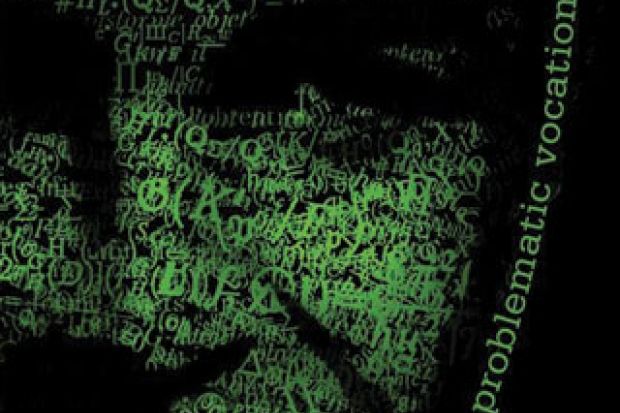It’s somewhat disconcerting for a reviewer when the subtitle of an important book by a leader in his field describes his profession as “problematic”. Michael Harris investigates why we do pure mathematics, and his provocative and incisive analysis presents a fascinating view of the motivations of practitioners. He examines the philosophy and sociology of mathematics, draws ideas from areas as diverse as Eastern philosophy and contemporary rap music, delves into literature and linguistics, and offers insight into his working life, travelling the world, meeting colleagues and attending champagne receptions.
The book’s title alludes explicitly to G. H. Hardy’s 1940 essay A Mathematician’s Apology, a favourite of many mathematicians for its account of the beauty and uselessness of pure mathematics. Harris is ruthless in his examination of this classic, showing how, in his discussion of the supposedly timeless beauty of mathematics, Hardy was very much of his time, drawing on the contemporary aesthetic ideas of figures such as the critic and artist Roger Fry.
“How I Acquired Charisma”, the first chapter, details Harris’ own mathematical background. Here “charisma” stands for the authority held by those who achieve what their peers recognise as significant breakthroughs. The author works in number theory, traditionally the purest area of maths, and has made substantial contributions to the Langlands Program, a research project brought to public attention in Edward Frenkel’s 2013 book, Love and Math: The Heart of Hidden Reality. Status is important to mathematicians in Harris’ world; they are apparently intensely conscious of how they rank against their peers. I don’t find this trait so apparent in the less rarefied mathematical world I inhabit, but then I don’t have charisma. (I wonder whether the competitiveness Harris talks of is a factor behind another problematic aspect of mathematics – the lack of women at the top.)
Harris’ reflections on the role of mathematics in the recent financial crisis raise important questions, and this chapter should be required reading for anyone studying or teaching financial mathematics. I was fascinated by his tracing of the history and connotations of the use of the word “trick” for an unexpected mathematical stratagem, and by his (plausible) speculation about the geometrical underpinnings of Thomas Pynchon’s novels. But the book’s most riveting pages are those describing the working-out of an inspiration that came to Harris in a dream. This account – describing discussions with mathematicians whose names I don’t know about mathematics I don’t understand – was absorbing, and gives a wonderful feel for how mathematicians work. Some readers might share my mild irritation at the author’s fondness for abbreviations and bold-face typography, but all will enjoy his subtle wit and sense of humour.
Scattered through the book are witty and engaging dialogues entitled “How to Explain Number Theory at a Dinner Party”, in which a number theorist tries to persuade a performing artist of his field’s attractions. Unlike the performing artist, I loved Harris’ exploration of the Galois group in Hamlet; a whimsical exposition of a deep mathematical idea. And while the performer’s parting shot that “the author expects readers to pick up the book just in order to watch mathematicians care about the Birch-Swinnerton-Dyer conjecture” may sound impertinently plausible, it undervalues a fascinating work that is the product of much deep thinking by a remarkable mathematician.
Mathematics without Apologies: Portrait of a Problematic Vocation
By Michael Harris
Princeton University Press, 464pp, £19.95
ISBN 9780691154237 and 9781400852024
Published 11 February 2015





